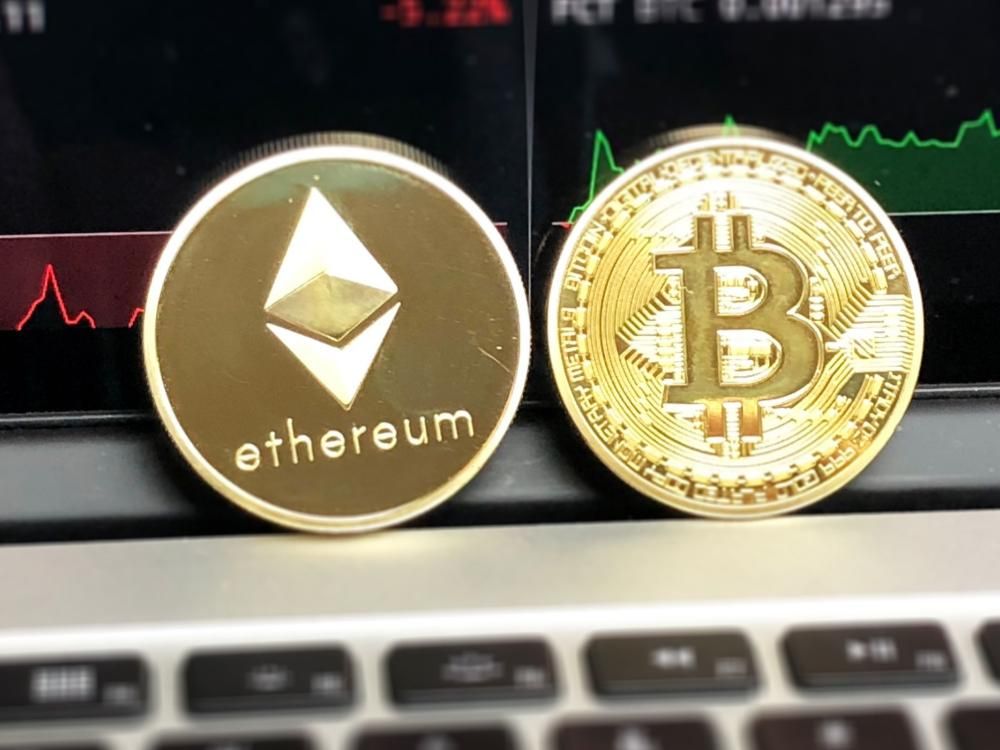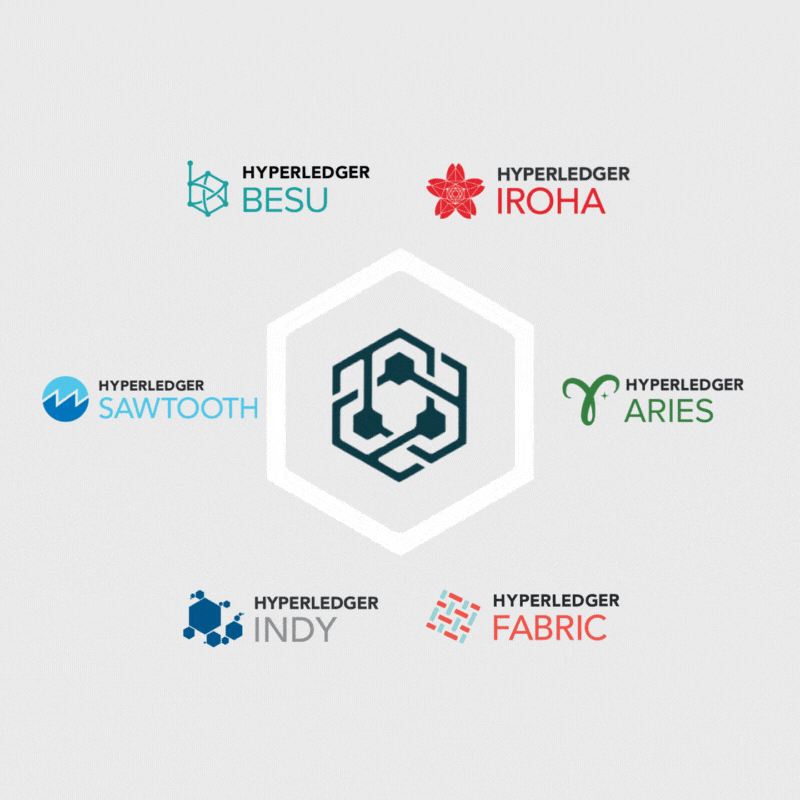
Blockchain services, solutions, & platforms we use
- Home
- Blockchain services

by Ruslan Tuktarov,
Head of Blockchain Solutions Department
Blockchain is an immutable shared ledger facilitating transactions and tracking assets in business networks. Any tangible (a house/car) or intangible (a patent/copyright) asset can be tracked and traded on a blockchain network, mitigating risks and cutting costs for all the parties involved.
Itransition builds blockchain-based solutions tailored for the unique purposes of enterprises from different verticals. By implementing blockchain technology into daily operations, businesses can streamline multiple business processes, from customer data exchange to secure supply chain management to transparent accounting.
Blockchain market insights
the global blockchain technology market size by 2030
Fortune Business Insights
of the global blockchain market revenue accounts for the financial segment
Grand View Research
annual growth rate of the global demand for blockchain services
Future Market Insights
Our blockchain solutions
Turning to Itransition’s blockchain development services, our customers can get either standalone custom blockchain solutions or blockchain components integrated into other enterprise solutions.
Blockchain for finance
According to Jupiter Research, adopting blockchain will allow financial services organizations and banks to save up to $27bn on cross-border settlement transactions by the end of 2030, reducing costs by more than 11%. Blockchain enables secure, inclusive, and open networks and streamlines operational processes in FinTech.
Payments
Blockchain-based solutions can facilitate payments, eliminate intermediaries and streamline transactions’ execution time and cost. The technology also erases geographical boundaries, enabling global transactions and facilitating micropayments.
Crypto wallet
We can build a custom hot cryptocurrency wallet as a separate solution or as part of a client platform’s functionality. This way, our client can start accepting crypto payments, saving on intermediary commissions. It will help to take the business from the local to the global level.
Token creation
We can create a token for our clients and develop the tokenomics of the whole project. We can also launch the token for trading on trustworthy decentralized exchanges (i.e. Uniswap) to help businesses attract new sources of funding and liquidity and increase investor engagement.
NFT module
An NFT module can store arbitrary data on the blockchain and facilitate integration processes between business divisions. For example, in healthcare, using NFT can improve drug testing processes by streamlining data exchange between divisions, while in insurance, it can simplify the process of KYC data scoring with the help of a corresponding NFT registry.
Trading platform
We can develop a trading platform or an NFT marketplace for any product or service that will take payments in cryptocurrency via a browser.
A blockchain-based financial insurance system will enable companies using Bitcoin (BTC) or Ethereum (ETH) in settlements to mitigate the risks of severe crypto price fluctuations.
P2P lending
We can create a peer-to-peer (P2P) lending system, enabling individuals to obtain loans from peers, meaning other individuals, without involving financial institutions usually acting as intermediaries.
CEX
We can build a centralized crypto exchange (CEX), a trading platform regulated by a central authority acting as a custodian. The platform stores digital assets on clients’ behalf and enables crypto trading, setting trading terms and conditions.
DEX
We can create a decentralized crypto exchange (DEX) supporting peer-to-peer financial transactions atop a noncustodial blockchain system. Our team can also integrate clients' applications with existing DEXs, giving them easy access to hundreds of liquidity pools for popular assets.
DAO
Creating a decentralized autonomous organization (DAO) will allow companies to algorithmically manage the process of attracting investor capital and profit distribution and facilitate decision-making among stakeholders.
dApps
We build dApps, peer-to-peer decentralized applications with no single point of failure, which combine smart contracts and a frontend user interface.
Blockchain provides a new model for health information exchange. A distributed ledger technology allows for the secure transfer of patient medical records, enhancing the privacy and interoperability of health data.
PHI management
- Health record management
- PHI storage and sharing
- Patient consent recording
- Protected access to clinical tests
- Clinical trial and research results management
- Genetic and health data recording
- EHR data security
Care delivery workflows
- Blockchain-based IoMT
- Drug traceability
- Improved healthcare interoperability
- Medical staff credentialing
Secure payments
- Automated patient billing
- Untraceable payments
- Errorless claims processing without intermediaries
- Validation and verification of claims transactions via smart contracts
- Simplified and secure insurance
Blockchain for ecommerce
Blockchain can strengthen the security of ecommerce transactions without involving intermediaries. Blockchain's distributed ledger guarantees data integrity and transaction safety and prevents tampering.
Purchasing experience
- Cryptocurrency transactions
- Automated payment processing
- Digital receipts
- Automated returns and refunds
- Crowdsales and auctions
Product authenticity
- Anti-counterfeiting solutions
- Tracking of high-value items
- Ownership record and tracking
- Digital and IP rights management
Loyalty & rewards
- Single storage of loyalty data
- Multi-branding loyalty programs
- Real-time program updates
- Buying habits tracking
Blockchain for education
Blockchain fosters transparency in the educational sector. This verifiable and tamper-proof technology enables immutable recording of educational data for eLearning systems and secure storage and transfer of degrees and certifications.
Elearning program management
- Decentralized massive open online course (MOOC) platforms
- Open-source knowledge libraries and networks
- Verification of elearning program credibility
- Anti-plagiarism and copyright protection
Student management
- Management of learners’ IDs and academic credentials
- Learner record management
- Attendance validation
- Learning progress tracking
Knowledge assessment & certification
- Digital certificate issue and delivery
- Acquired knowledge validation
- Open badges and skill portfolios
- Digital signatures
- Repository of issued credits, certificates, and achievements
Cross-industry solutions
Blockchain technology elevates the level of trust and transparency. Immediate transfer and safe data storage by permissioned network members make blockchain an effective tool for workflow transformation across verticals.
Digital identity
Merging blockchain and biometrics, proof of identity systems give users more control, security, and mobility. We deliver decentralized digital ID solutions that help track and verify identities, manage the use of digital data, and prevent unauthorized access.
- KYC and AML solutions
- IP rights registry
- Proof of ownership or insurance
- Secure and seamless travel
- Background checks and training records
Supply chain
We streamline supply chain management for our clients in various industries by facilitating reliable and fast movement of products.
- Shipment tracking
- Product traceability
- Resource planning and utilization
- Circular production
- Supplier management
- Quality control
- Fraud and counterfeit prevention
Social impact & sustainability
We collaborate with enterprises and non-governmental organizations to create sustainable blockchain-based solutions that have a strong social impact.
- Immutable and verifiable transaction records
- Transparent and accountable solutions for charity
- Peer-to-peer trading of renewable energy
- Carbon Credits and Emissions Tracking
- Humanitarian aid distribution
- Waste management and recycling
- Disaster response
Client spotlight

+30,000
active users
Stock trading software development
Itransition delivered a suite of web, desktop, and mobile applications for retail investors to track their investment portfolios, analyze market volatility, and manage risks.

18%
growth in bond portfolio
Trading platform software development
We delivered mobile trading apps for a European bond-trading service with $1bn+ worth of funds. Itransition ensured enhanced UX, top-notch security, and expanded functionality.

Unlimited number
of connected crypto exchanges
Cryptocurrency platform
Itransition developed a cryptocurrency exchange and trading platform, connecting a vast number of crypto exchanges to offer traders the best exchange rates available.

Reduced costs
of patent processing
Patent management platform
Itransition’s team delivered a blockchain app that brings transparency to the IP market. Developed using the Hyperledger Fabric framework, the platform allows for secure management of patent licensing.

+30,000
active users
Stock trading software development
Itransition delivered a suite of web, desktop, and mobile applications for retail investors to track their investment portfolios, analyze market volatility, and manage risks.

18%
growth in bond portfolio
Trading platform software development
We delivered mobile trading apps for a European bond-trading service with $1bn+ worth of funds. Itransition ensured enhanced UX, top-notch security, and expanded functionality.

Unlimited number
of connected crypto exchanges
Cryptocurrency platform
Itransition developed a cryptocurrency exchange and trading platform, connecting a vast number of crypto exchanges to offer traders the best exchange rates available.

Reduced costs
of patent processing
Patent management platform
Itransition’s team delivered a blockchain app that brings transparency to the IP market. Developed using the Hyperledger Fabric framework, the platform allows for secure management of patent licensing.

+30,000
active users
Stock trading software development
Itransition delivered a suite of web, desktop, and mobile applications for retail investors to track their investment portfolios, analyze market volatility, and manage risks.

18%
growth in bond portfolio
Trading platform software development
We delivered mobile trading apps for a European bond-trading service with $1bn+ worth of funds. Itransition ensured enhanced UX, top-notch security, and expanded functionality.

Unlimited number
of connected crypto exchanges
Cryptocurrency platform
Itransition developed a cryptocurrency exchange and trading platform, connecting a vast number of crypto exchanges to offer traders the best exchange rates available.

Reduced costs
of patent processing
Patent management platform
Itransition’s team delivered a blockchain app that brings transparency to the IP market. Developed using the Hyperledger Fabric framework, the platform allows for secure management of patent licensing.
The scope of our blockchain services
A software solutions provider with 25+ years of experience, we help enterprises embrace digital transformation by adopting blockchain and enable trusted data exchange and process automation.

We thoroughly analyze your business case and elaborate a suitable strategy for blockchain software development, seamless implementation, and sustainable use. We assess blockchain architecture and logic, operation, performance, and resistance to network contingencies as part of our blockchain consulting.
Blockchain development
We deliver decentralized solutions and modules, ensuring data integrity, security, and transparent transactions. We design, develop, and implement decentralized applications (dApps) and integrate them into enterprise systems, enabling quick and cost-effective digital asset transfer.
IDO & token development
We offer technology support to launch initial DEX offering campaigns. From ideation to design and development, our blockchain specialists will help you jumpstart your IDO projects and introduce your new token to the market.
Our team of blockchain experts delivers smart contracts (including oracles) within your chosen blockchain network to help you facilitate payments, deals, and money transfers. Whether it’s a crowdsourcing campaign or an asset exchange, we cover every aspect of smart contract development, implementation, and audit, ensuring its smooth adoption and post-launch support.
Blockchain security
We evaluate and analyze how blockchain can make your business operations more secure. We can also carry out security testing to check how the ledger resists potential fraudulent activities. If any leaks are detected, we will help you restore and reinforce your blockchain solution.
Transform your business with blockchain capabilities
Blockchain platforms we work with
We constantly expand our technical stack and work with industry-leading blockchain networks to ensure the highest quality of our software solutions.
Ethereum is a community-run blockchain network powering Ether (ETH), the second largest cryptocurrency by market capitalization and a leading platform for dApps development. As of August 2023, it runs on 11,100 thousand volunteers worldwide, known as nodes.
Features
- Open-source code
- Capability to build your own token and wallet
- Asset tokenization (NFTs)
- Staking
- Smart contracts
- Banking for everyone (lending, borrowing, and saving products)
4,000+
projects built on Ethereum
53.3 mn +
smart contracts on Ethereum
$410 bn
value secured on Ethereum
Polygon is a Layer-2 scaling solution for Ethereum. It represents a ‘value layer’ that grants access to the global economy. The platform enables decentralized finance solutions and aims to address problems with scaling on the Ethereum blockchain by processing transactions quickly.
Features
- Compatible with the Ethereum Virtual Machine (EVM)
- Fast transactions of 2.1 seconds
- Near-zero processing (gas) fees
- A modified proof-of-stake (PoS) consensus mechanism with low electricity consumption to make it carbon-neutral
1.24 mn +
deployed smart contracts
~$0.018
average cost per transaction
13.62 bn +
NFT sales volume
Arbitrum is a technology suit designed to scale Ethereum. You can use it to build Web3 apps, deploy smart contracts, but with a higher throughput and at a lower cost. According to Arbitrum, its proprietary Layer 2 protocol Nitro provides 7x more throughput without sacrificing security.
Features
- Compatible with Ethereum Virtual Machine (EVM)
- Fast transaction processing and easy operation
- Ethereum security level
- Leverages optimistic rollups technology (It processes transaction data on the Arbitrum rollup chain and then puts it back to Ethereum)
OP Mainnet positions itself as a fast and low-cost Ethereum L2 blockchain. Its EVM-equivalent architecture can scale Ethereum apps. The Optimism Foundation is a nonprofit organization aiming to facilitate the development of highly impactful projects promoting the sustainability of public goods.
Features
- Reduced gas fees
- Increased interoperability with other blockchains
- The optimistic rollup model
- Community support
Solana aims to increase blockchain speed, security, and decentralization. It also enables smart contracts, allowing developers to build dApps. Solana’s architecture facilitates the processing of thousands of transactions within seconds.
Features
- Proof of History consensus mechanism
- Block times of 400 milliseconds
- Validated by thousands of nodes
- 0% net carbon impact
4,704
transactions per second
21.9 mn
NFTs minted
$0.00025
average cost per transaction
Tron is a fully decentralized blockchain platform that operates as a community-governed DAO. The network hosts the largest circulating supply of stablecoins across the globe. Using Tron, developers can design various decentralized apps and crypto wallets. Tron is a popular platform for running gaming smart contracts and content sharing.
Features
- A delegated proof-of-stake (DPoS) consensus
- Twenty-seven super representatives (SRs) responsible for keeping the transaction history and validating transactions
- High throughput ecosystem
- Supports various APIs
Cardano is a Proof-of-Stake blockchain network for Web3 applications that serves as an alternative to Ethereum. The platform runs on Ouroboros, the first peer-reviewed blockchain protocol which allows for sustainable blockchain scaling without compromising security.
Features
- Smart contracts support
- Hosting of decentralized finance (DeFi) applications, NFT marketplaces, wallets, and stablecoins
- Ability to create native tokens
Hyperledger was created as a platform to facilitate blockchain adoption for enterprises. An open-source solution, Hyperledger aims to support interoperability across various blockchains, enabling cross-chain transactions. The platform is referred to as a “greenhouse” bringing together developers, users, and vendors from different sectors.
Features
- Modular, extensible frameworks with common building blocks that can be reused
- Rich and easy-to-use APIs
- Independent and agnostic of all alt-coins, cryptocurrencies, and tokens
- Regular reviews and audits by security experts
- Hyperledger developer community

Image title: Hyperledger frameworks
Image source: hyperledger.org
Blockchain product delivery pipeline
1
Assessment
We assess your business requirements, evaluate blockchain’s applicability, and elaborate the solution’s development plan.
2
Design
We define architecture, design UI/UX, and build a prototype of your blockchain-based solution.
3
Development
The team develops the solution’s front and back end, tests it for vulnerabilities and bugs, and integrates it with corporate systems.
4
Implementation
We roll out the product and offer corporate training programs for your employees to facilitate the solution’s adoption.
5
Maintenance
We monitor the operation of your newly implemented blockchain ecosystem, ensuring its stable and failsafe performance.
6
Modernization
Our experts handle your solution’s upgrades, modifications, customizations, or integrations with third-party solutions.
Blockchain development cost
The cost of blockchain software development services can significantly vary depending on numerous factors, including functional and non-functional requirements, a particular industry, solution complexity, team composition and experience, as well as technical tools and platforms used. Itransition’s blockchain experts are ready to assess your request and calculate the approximate development cost of your future blockchain-based solution.
$40-60K
Low complexity app
Basic dApps and smart contracts. For example, a payment app developed around existing cryptocurrencies.
$60-150K
Medium complexity app
dApps developed based on the existing blockchain with moderately complex architecture and both centralized and decentralized elements.
$150-400K
High complexity app
A decentralized app with centralized elements, complex architecture and functional requirements. Multi-chain support included.
$400K-2M
Full-featured blockchain app
A multi-functional complex blockchain app comprising smart contracts and a private network.
Get a quote for your blockchain solution
Why build blockchain solutions with us
Flexibility
Itransition’s specialists are ready to build blockchain-based solutions and customize them according to the clients’ needs, as well as to develop custom blockchain solutions to fit the most deliberate customer requirements.
Safety
We help you overcome the most critical blockchain security issues, such as cyberattacks, fraud, and data breaches, contributing to further customer adoption, involvement, and trust in online transactions.
Scalability
We build blockchain-based solutions according to our clients’ current needs, keeping future project growth in mind. We ensure a high level of scalability, enabling our clients to outpace their rivals and keep the lead in a chosen domain.
FAQs
Do you ensure the privacy of the data stored in the blockchain?
Itransition elaborates a special data governance strategy to eliminate the threat of data tampering and theft and stay compliant with the financial regulations across various jurisdictions, as well as data protection standards such as GDPR, HIPAA, FINRA, etc. We also introduce effective policies to confirm data validity and implement API-based authorization control and other security measures.
What are the types of blockchain networks?
There are four main types of blockchain platforms:
- A public blockchain
is one that anyone can join and participate in, such as Bitcoin. - A private blockchain
is a decentralized peer-to-peer network governed by an organization controlling who can participate. - Permissioned networks
are usually privately managed blockchains but could also be public. Participants need to obtain an invitation or permission to join. - Consortium blockchains
are governed by multiple organizations responsible for maintaining the network.
What is BaaS?
Blockchain-as-a-Service (BaaS) is a cloud-based solution that provides pre-built scalable and secure blockchain infrastructure, potentially making the development of dApps and smart contracts more cost-effective than building a blockchain solution from scratch. Itransition offers BaaS services, building scalable and secure blockchain-based solutions that fit our clients’ needs.
Can blockchain solutions be integrated with the internet of things and machine learning?
Blockchain, IoT, and AI can potentially converge and enable new business models. With deep expertise in artificial intelligence, machine learning, and the Internet of Things, Itransition can augment your blockchain-based solutions with new capabilities.

Service
Smart contract development services & implementation best practices
Discover our smart contract development services and see how they're helping businesses to reduce operational costs, enable automation, and enhance efficiency.

Service
Custom software development services
Custom software development services from a global provider with 25+ years of experience and 3,000+ IT professionals on board.

Service
Application development services
Itransition is a custom application development company building powerful software for SMBs and large enterprises. Get a free quote now.
More about financial software services
Services & solutions
- Financial software development
- Fintech software development
- Banking software development
- Mobile banking app development
- Wealth management software
- Stock trading software
- Financial reporting software
- Financial data analytics
- CRM software for financial services
- Banking CRM
- Artificial intelligence
- Predictive analytics
- Business intelligence
- RPA